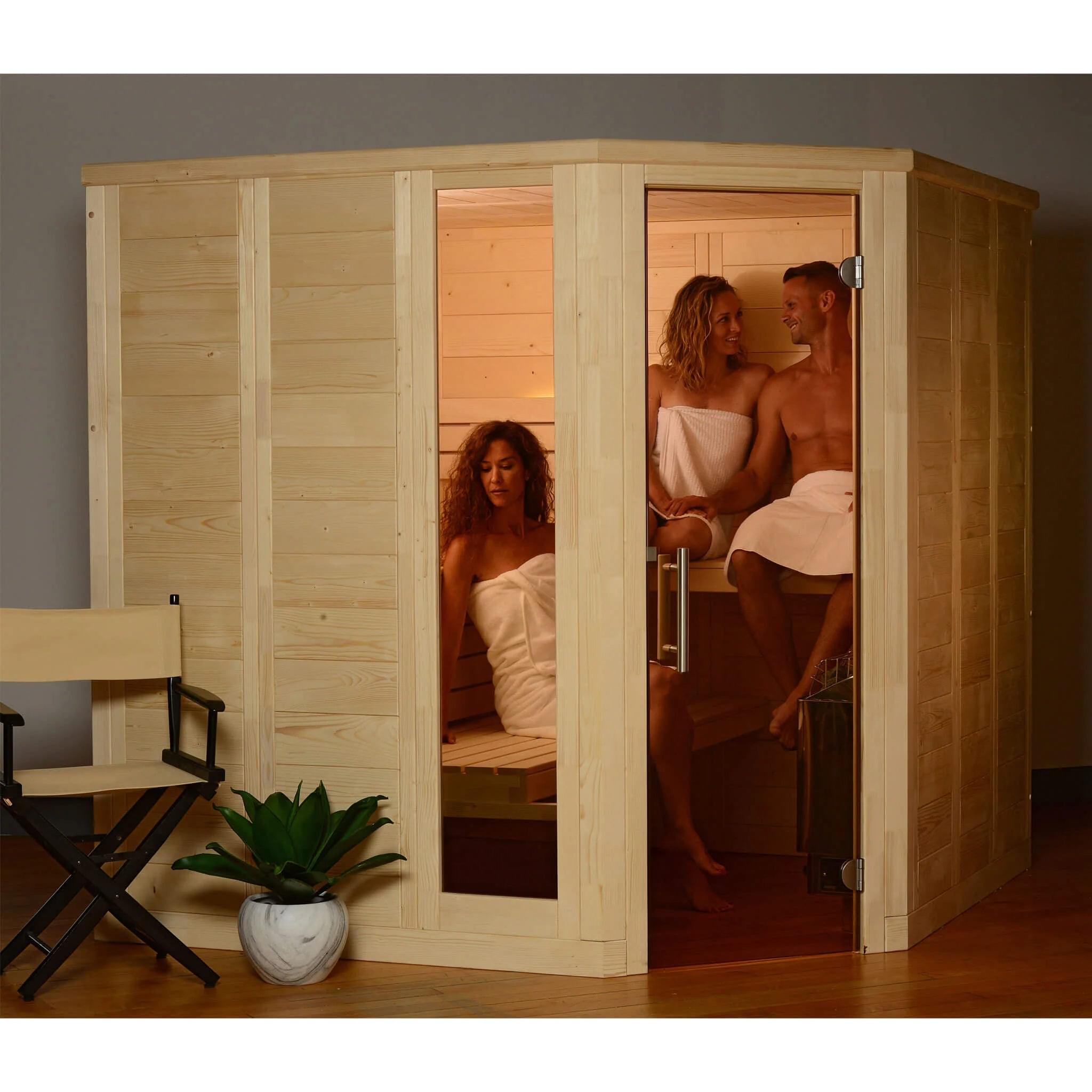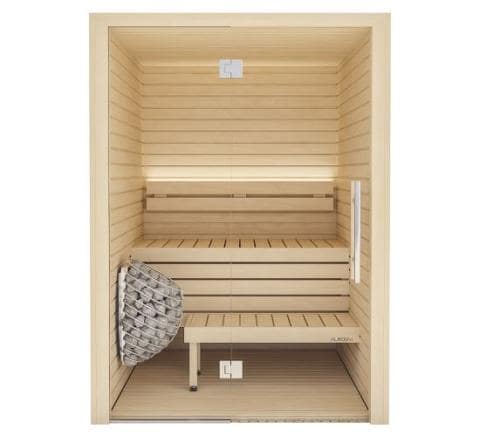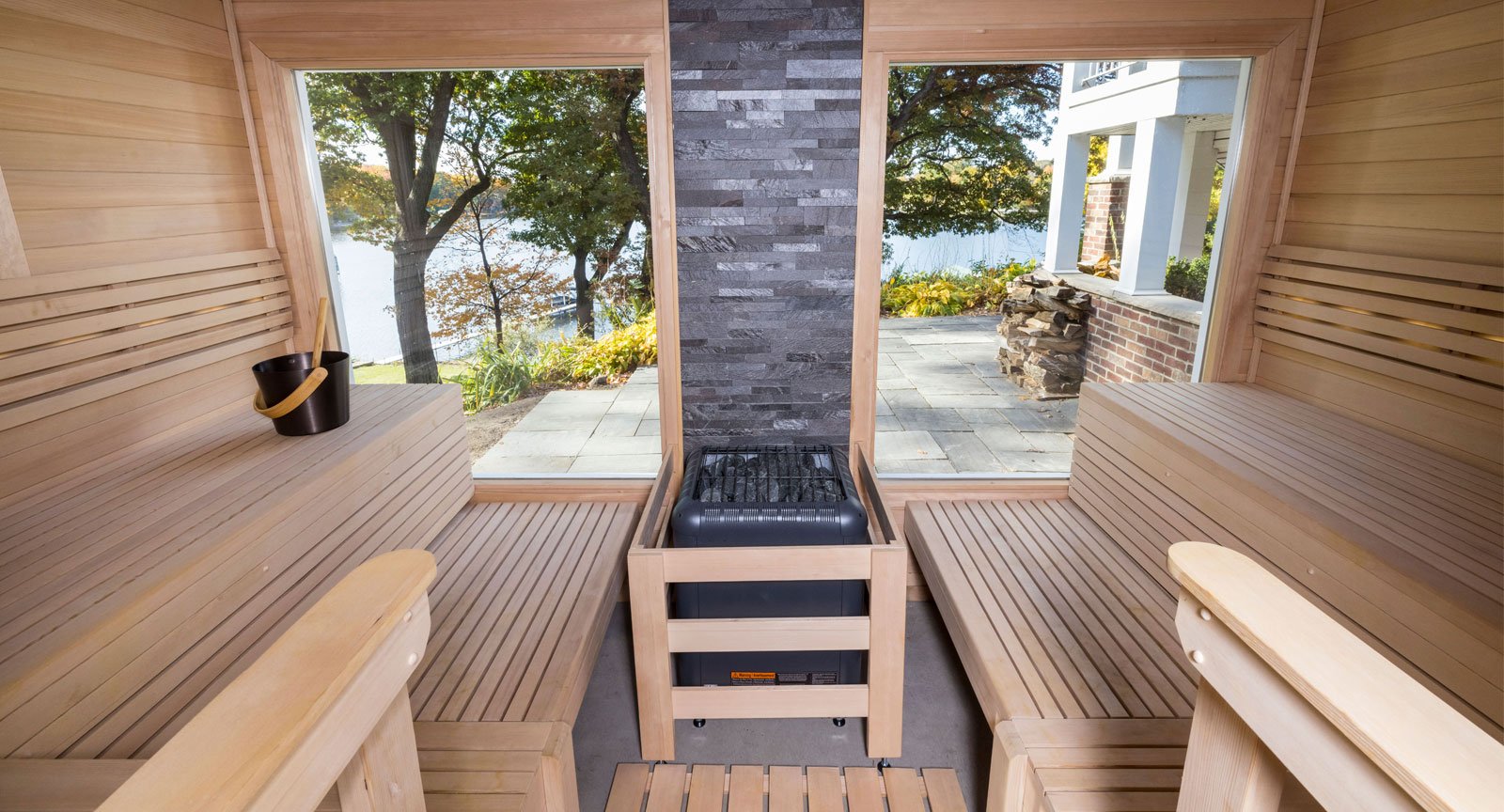All about Traditional Sauna
Table of ContentsNot known Details About Traditional Sauna An Unbiased View of Traditional Sauna10 Easy Facts About Traditional Sauna DescribedThe 10-Second Trick For Traditional SaunaTraditional Sauna Things To Know Before You Get This
A lot of the weight shed in a sauna is water loss and is re-gained upon rehydrating. Without an uncertainty sauna can be an important part of a healthy weight loss program. To consider the distinctions between conventional and IR saunas, I will divide these into verifiable, academic, and fabricated differences.Therefore, the most popular factor in the saunawhich goes to the ceiling directly over the sauna heateris usually in between 185 and 190 F. Claims that a conventional sauna exceeds 200 F is just not true and not appropriate for electric saunas offered in the US. The temperature level for a far-infrared sauna is normally established between 120 and 140 F; however, unlike the standard sauna, the objective in and IR room is not to attain a high temperature.

When a conventional sauna has actually been appropriately heated, the sauna walls are cozy, the air temperature level has actually achieved established temperature and the rocks are super heated. As a fascinating side note, the warmed walls and the rocks are giving off far-infrared warm, combined with the warmed air, to create an "covering heat".
The Buzz on Traditional Sauna
When the heat is accomplished, the aspects cycle on and off to preserve the heat. A lot of conventional sauna customers appreciate putting water over the rocks to create heavy steam to increase sauna moisture levels. The advantages of pouring water over the rocks include: making the room much more comfortable, dampening the nasal passages, and allowing the use of aromatherapy by blending important oils with the water.

When the power goes into the body, it causes the body temperature to boost and ultimately results browse this site in sweat. In an infrared sauna it's important for the emitters/heaters to remain on practically continuously. Because there is no mass of rocks to keep heat, the sauna will cool down if the emitters shut off.
Traditional Sauna Can Be Fun For Everyone
As pointed out above, the sauna bather in an infrared space wishes to place himself before running emitters to get optimal benefit from the warmth. The home heating time for both rooms can be really different, depending on how the areas are made use of. For a conventional sauna, a bather needs to allow 30-40 mins for the area to achieve a desired temperature and to appropriately pre-heat the rocks.

A well created sauna will usually achieve a temperature of 150-160 F in regarding 30-40 mins (Traditional Sauna). For hotter temperatures, the space might require to heat for a longer duration. Once the room attains set temperature, the heating unit will cycle on and off, normally running about 50% of the moment. The protected read the full info here wall surfaces and the heated rocks will keep the space warm and at steady temperature levels.
To some, 15 mins was "thrown away" while the infrared power heated up the timber panels as opposed to warming a body, while others find a pre-heated space to be much more comfortable and believe a raised starting temperature is essential to start sweating. The length of advised usage for each and every space is around the very same (10-15 mins per session); nevertheless, as a result of the lower air navigate to this website temperatures and the capability to really feel the results of infrared warm much faster than a standard sauna, it is not uncommon for an individual to invest a total of 20-30 mins in an infrared sauna.
Some Of Traditional Sauna

The typical expense per kWH of electrical energy in the U.S. is approximately $0.11, so a 4.5 kW heating system will cost about $.50 to run for one hour, if the heating unit runs constantly for one hour. Commonly a sauna heating unit will run for 75% of the first hour and 50% of subsequent hours on considering that the aspects cycle once the set temperature level is accomplished.
A two individual far-infrared space is generally physically smaller than a traditional sauna, frequently regarding 4' x 4' or smaller sized. The IR furnace is generally 1.5-1.7 kW utilizing a 120 volt 15 amp plug-in service. Given that the room can be used quicker than a sauna area, we will think the space is utilized for to of an hour including warm up time.
Ultimately, there is a hardly ever discussed distinction in the social experience between the 2 rooms. While our society has lost some of the social benefit of the traditional sauna experience, it can be extremely socially gratifying (Traditional Sauna). From family members time in the sauna, to heart-felt discussions with significant others, to sauna partiesthe standard sauna experience can bring about intimate socializing
Unknown Facts About Traditional Sauna
Most higher end infrared areas consist of tinted light treatment, audio systems and full-glass fronts.